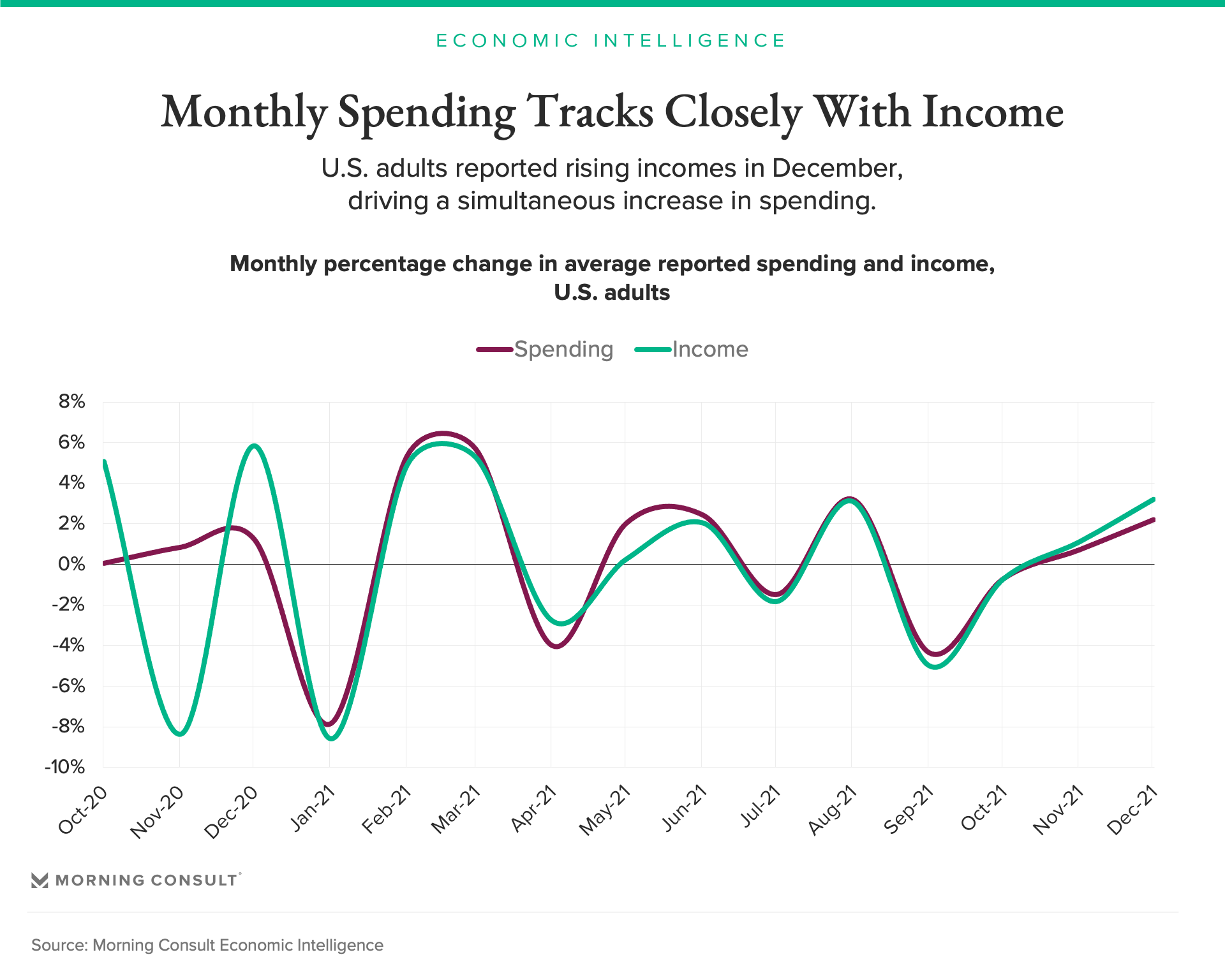China's Growth Strategy: Reliance On Consumer Spending Faces Headwinds

Table of Contents
Weakening Consumer Confidence and Sentiment
The foundation of a robust consumer spending-driven economy is strong consumer confidence. However, several factors have significantly weakened this confidence in China, hindering the desired growth trajectory.
Impact of the Zero-COVID Policy
The stringent zero-COVID policy, while aiming to protect public health, inflicted considerable economic scars. The prolonged lockdowns led to widespread disruptions, impacting businesses and consumers alike.
- Increased unemployment: Lockdowns caused widespread business closures, resulting in significant job losses and a surge in unemployment, particularly impacting the youth population.
- Business closures: Many small and medium-sized enterprises (SMEs), crucial for employment and domestic consumption, were forced to shut down permanently.
- Reduced household incomes: Job losses and reduced working hours directly translated into lower household incomes, decreasing disposable income available for consumption.
- Debt accumulation: Many households accumulated debt during the lockdowns, further dampening their capacity and willingness to spend.
Data from the National Bureau of Statistics of China shows a sharp decline in consumer confidence indices during the peak of the zero-COVID policy, with spending on non-essential goods and services plummeting. The recovery, while underway, remains fragile.
Rising Unemployment and Job Insecurity
China's youth unemployment rate has reached alarming levels, creating a significant drag on future consumer spending. This uncertainty about job security significantly impacts spending habits.
- Statistics on youth unemployment: The official unemployment rate for young people consistently exceeds 20%, a concerning figure that reflects broader economic anxieties.
- Impact on household savings and spending habits: With uncertain job prospects, young people are more likely to prioritize saving over spending, hindering the growth of consumer spending.
- Potential social unrest: High youth unemployment can lead to social unrest and instability, further undermining economic confidence and consumer spending.
Government initiatives to address youth unemployment, such as encouraging entrepreneurship and providing job training programs, have had limited success so far. This necessitates a more comprehensive and effective strategy to boost employment opportunities and restore confidence among young people.
High Household Debt Levels and Property Market Concerns
China's burgeoning household debt and the crisis in its real estate sector pose further significant threats to consumer spending.
The Real Estate Crisis
The ongoing crisis in China's real estate sector significantly impacts consumer wealth and confidence. The sector, once a major driver of growth, is now a source of instability.
- Property price declines: Property prices have been declining in many major cities, eroding household net worth and impacting consumer confidence.
- Developer defaults: Several major real estate developers have defaulted on their debts, creating uncertainty and fear among homeowners and potential buyers.
- Mortgage boycotts: Homeowners have staged boycotts, refusing to pay mortgages on unfinished properties, further exacerbating the crisis.
- Impact on household net worth: The decline in property values has significantly reduced household net worth, leading to decreased consumer spending.
News reports and economic data consistently highlight the severity of the real estate crisis, painting a grim picture for consumer spending.
Rising Debt Burden
Increasing levels of household debt represent another significant challenge. The high reliance on consumer credit is now impacting disposable income.
- Growth of consumer credit: Consumer credit has expanded rapidly in recent years, leaving many households with a significant debt burden.
- Impact on disposable income: High debt repayments reduce disposable income, leaving less money for discretionary spending.
- Potential for debt defaults: Rising interest rates and economic uncertainty increase the risk of widespread debt defaults, potentially triggering a financial crisis.
Compared to other major economies, China's household debt levels, while still relatively lower, are rising rapidly, raising concerns about future consumer spending.
Geopolitical Risks and Global Economic Slowdown
External factors also play a significant role in dampening China's consumer spending.
Global Inflation and Supply Chain Disruptions
Global inflation and ongoing supply chain disruptions are significantly impacting China's economy and consumer spending.
- Increased import costs: Rising global inflation has increased import costs, reducing consumer purchasing power.
- Reduced consumer purchasing power: Higher prices for essential goods and services leave consumers with less money for discretionary spending.
- Impact on various sectors: Sectors like automobiles and electronics are particularly vulnerable to supply chain disruptions and higher import costs.
Global economic forecasts predict continued inflation and supply chain challenges, posing a headwind for China's consumer spending-led growth strategy.
US-China Tensions
Rising geopolitical tensions between the US and China add further uncertainty and negatively affect consumer sentiment and investment.
- Trade wars: Trade wars and tariffs increase the cost of goods and services, impacting consumer purchasing power.
- Technological decoupling: Technological decoupling between the US and China creates uncertainty and hinders technological advancement, impacting various sectors.
- Sanctions: Sanctions and other restrictive measures can negatively impact business confidence and consumer spending.
- Diversification strategies: Chinese businesses and consumers may adopt diversification strategies to reduce their dependence on the US market, but this process takes time and resources.
Conclusion
China's ambition to shift its economic growth towards consumer spending faces significant hurdles. Weakening consumer confidence, high household debt, a struggling property market, and global economic uncertainty are all major headwinds. The success of this strategy hinges on addressing these challenges effectively. The government needs to implement comprehensive policies to boost employment, stabilize the real estate market, and manage household debt levels. Furthermore, mitigating the impact of global economic uncertainties is crucial.
Call to Action: Understanding the complexities surrounding China's consumer spending is crucial for investors, businesses, and policymakers alike. Further research into the dynamics of China's consumer spending is vital for navigating the uncertainties ahead and making informed decisions about the future of the Chinese economy. Stay informed on developments related to China's consumer spending and its related challenges to better assess the risks and opportunities.

Featured Posts
-
 Chicago History The Day Cassius Clay Won The Golden Gloves
May 28, 2025
Chicago History The Day Cassius Clay Won The Golden Gloves
May 28, 2025 -
 Arsenal News Gunners Fear World Class Striker Wants Liverpool Move
May 28, 2025
Arsenal News Gunners Fear World Class Striker Wants Liverpool Move
May 28, 2025 -
 Lotto Officials Reveal Locations Of Two Big Euro Millions Wins In Ireland
May 28, 2025
Lotto Officials Reveal Locations Of Two Big Euro Millions Wins In Ireland
May 28, 2025 -
 Pacers Vs Bulls Tyrese Haliburtons Playing Status Confirmed
May 28, 2025
Pacers Vs Bulls Tyrese Haliburtons Playing Status Confirmed
May 28, 2025 -
 Truck Explosion After Propane Leak Damages Homes Cnn Report
May 28, 2025
Truck Explosion After Propane Leak Damages Homes Cnn Report
May 28, 2025
Latest Posts
-
 Covid 19 Cases Explode In Asia India On High Alert
May 31, 2025
Covid 19 Cases Explode In Asia India On High Alert
May 31, 2025 -
 Understanding The New Covid 19 Variant Driving Case Increases
May 31, 2025
Understanding The New Covid 19 Variant Driving Case Increases
May 31, 2025 -
 Covid 19 A New Variant And The Implications For Global Health
May 31, 2025
Covid 19 A New Variant And The Implications For Global Health
May 31, 2025 -
 Covid 19 Outbreak Hong Kong Singapore Surge Sparks India Concerns
May 31, 2025
Covid 19 Outbreak Hong Kong Singapore Surge Sparks India Concerns
May 31, 2025 -
 Covid 19 Resurgence Understanding The Jn 1 Variant And Its Symptoms
May 31, 2025
Covid 19 Resurgence Understanding The Jn 1 Variant And Its Symptoms
May 31, 2025
